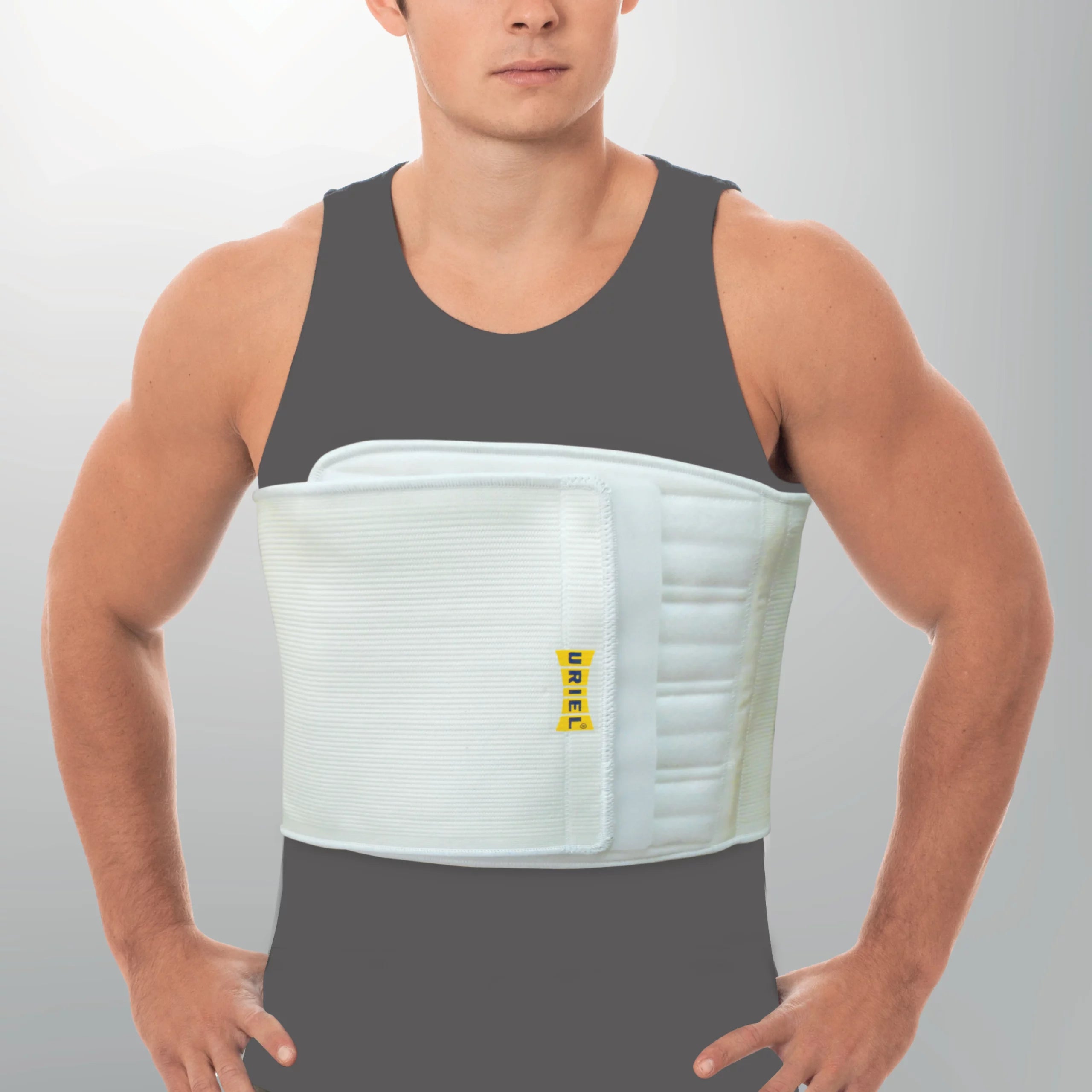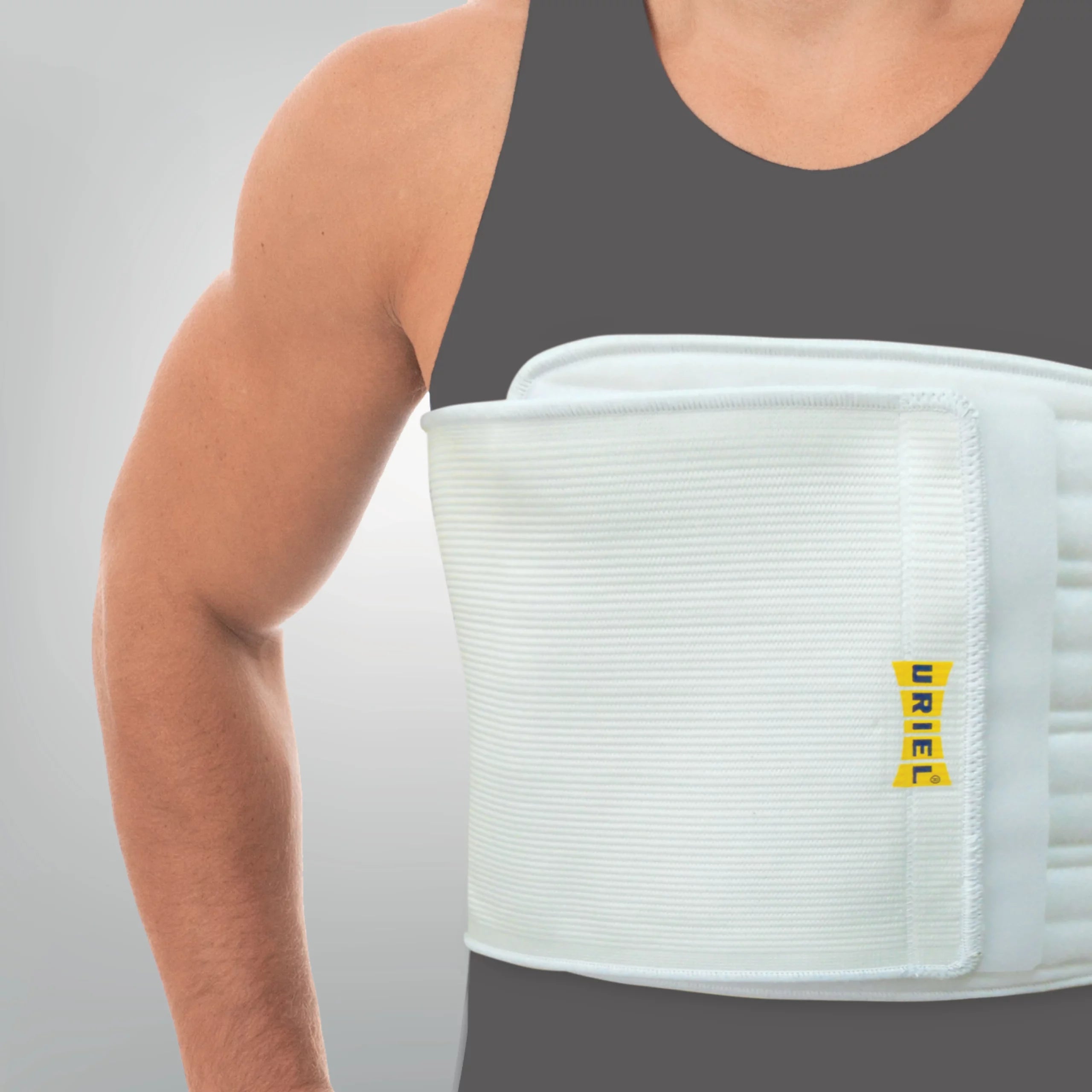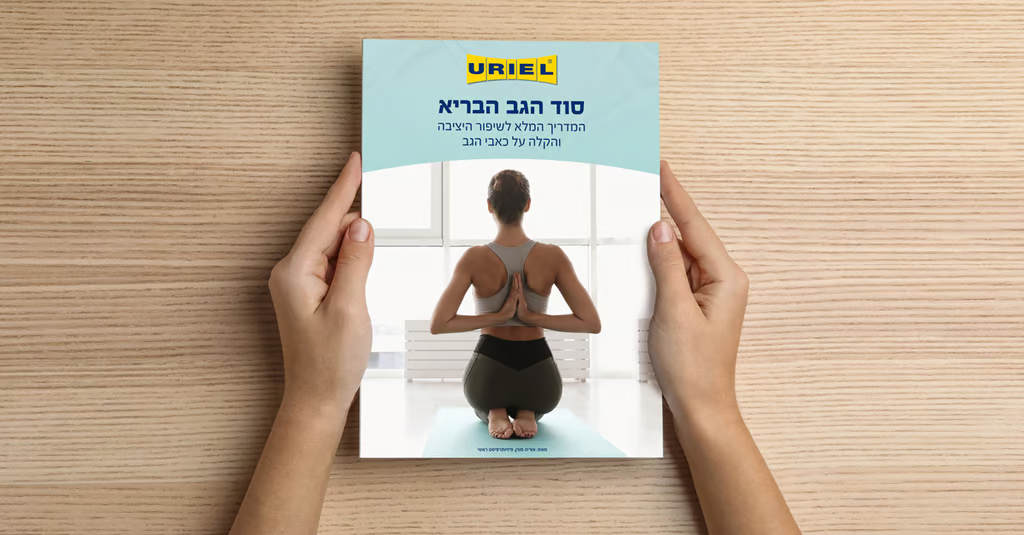

Hard Chest/Abdominal Belt (Post-surgery) | 11TO
Abdominal/chest belt made of breathable elastic fabric after surgery
A 26 cm high, breathable elastic fabric abdominal belt closes with a Velcro fastener for full adjustment to the desired pressure level. On the inside of the belt is a soft towel fabric that is comfortable in contact with the body and is designed to protect and preserve the surgical wound.
Medical indications - chest belt:
After abdominal and thoracic surgeries, injuries to the peritoneum

Dimensions

Extended description
Planning and design:
The elastic and airy fabric of the chest belt allows for uniform pressure around the chest, while providing gentle heating that is designed to protect the surgical area, increase blood flow to the area, and help speed up its recovery. The belt is designed to be comfortable to wear under clothing, flat and thin so that it allows for discreet use by not being noticeable.
Pain reduction:
A chest belt creates gentle pressure that helps reduce swelling.
After breast surgery, pressure and pain may occur in the chest. The belt is designed to bring the edges of the tissues that were cut during surgery closer together and help reduce the load on them by bringing them closer together, thereby reducing pain and speeding up recovery. The belt also provides support for the abdominal muscles in case of weakness.
Rehabilitation and recovery:
Using a belt allows you to perform basic activities without pain, thus encouraging movement, which improves blood circulation and reduces pain.
User manual
- You should consult your doctor regarding the method and duration of use of a hard abdominal/chest belt. The duration of use of the belt varies from a few days to many weeks.
- Choose the appropriate size according to the size chart on the packaging.
- The center of the belt should be attached to the back vertebrae at the desired height and the edges of the belt should be closed in front of each other, right wing on top of left wing.
- Pressure should be applied at a level that reduces pain and allows free breathing.
- It is recommended to clean the product occasionally depending on the degree of use.
Our expert advice
- A. Surgical scar care: Be sure to care for the surgical scar according to the instructions of your treating physician. Keep the scar clean, and keep a bandage under your belt according to the instructions of your treating medical team.
- B. Activity and Mobility: Depending on the surgical procedure you had, and your stage of recovery, ask your doctor for guidelines regarding your activity and mobility. Ask for recommendations regarding the type and level of activities that are appropriate for you.
- C. Use at night: Depends on the condition and the doctor's recommendation. Usually, in the first few days after surgery, it is recommended to use the belt at night as well because it reduces pain and allows for better sleep, allowing the body to rest, which is important for recovery.

Planning and design:
The elastic and airy fabric of the chest belt allows for uniform pressure around the chest, while providing gentle heating that is designed to protect the surgical area, increase blood flow to the area, and help speed up its recovery. The belt is designed to be comfortable to wear under clothing, flat and thin so that it allows for discreet use by not being noticeable.
Pain reduction:
A chest belt creates gentle pressure that helps reduce swelling.
After breast surgery, pressure and pain may occur in the chest. The belt is designed to bring the edges of the tissues that were cut during surgery closer together and help reduce the load on them by bringing them closer together, thereby reducing pain and speeding up recovery. The belt also provides support for the abdominal muscles in case of weakness.
Rehabilitation and recovery:
Using a belt allows you to perform basic activities without pain, thus encouraging movement, which improves blood circulation and reduces pain.
- You should consult your doctor regarding the method and duration of use of a hard abdominal/chest belt. The duration of use of the belt varies from a few days to many weeks.
- Choose the appropriate size according to the size chart on the packaging.
- The center of the belt should be attached to the back vertebrae at the desired height and the edges of the belt should be closed in front of each other, right wing on top of left wing.
- Pressure should be applied at a level that reduces pain and allows free breathing.
- It is recommended to clean the product occasionally depending on the degree of use.
- A. Surgical scar care: Be sure to care for the surgical scar according to the instructions of your treating physician. Keep the scar clean, and keep a bandage under your belt according to the instructions of your treating medical team.
- B. Activity and Mobility: Depending on the surgical procedure you had, and your stage of recovery, ask your doctor for guidelines regarding your activity and mobility. Ask for recommendations regarding the type and level of activities that are appropriate for you.
- C. Use at night: Depends on the condition and the doctor's recommendation. Usually, in the first few days after surgery, it is recommended to use the belt at night as well because it reduces pain and allows for better sleep, allowing the body to rest, which is important for recovery.
Blog

Treating Lower Back Pain: 6 Tips to Improve Quality of Life
Suffering from lower back pain? You are definitely not alone. There are many ways to deal with one of the most common pains in the world, here are some of them. It's time to relieve the pain.

The Secret to a Healthy Back: The Complete Guide to Improving Posture and Alleviating Back Pain
Is back health important to you? Get the 'Secret of a Healthy Back' guide containing information, tips and useful advice for relieving back pain. By Oriya Moran, Chief Physiotherapist Download t...

Kinesio tape or professional elastic bandage?
Suffering from sports injuries, bruises or simply pain caused by medical problems? Get to know the variety of dressing products that will support you. When should we use kinesiology tape and why d...
